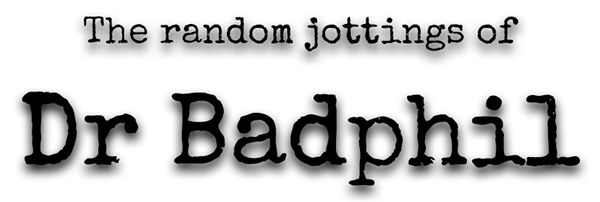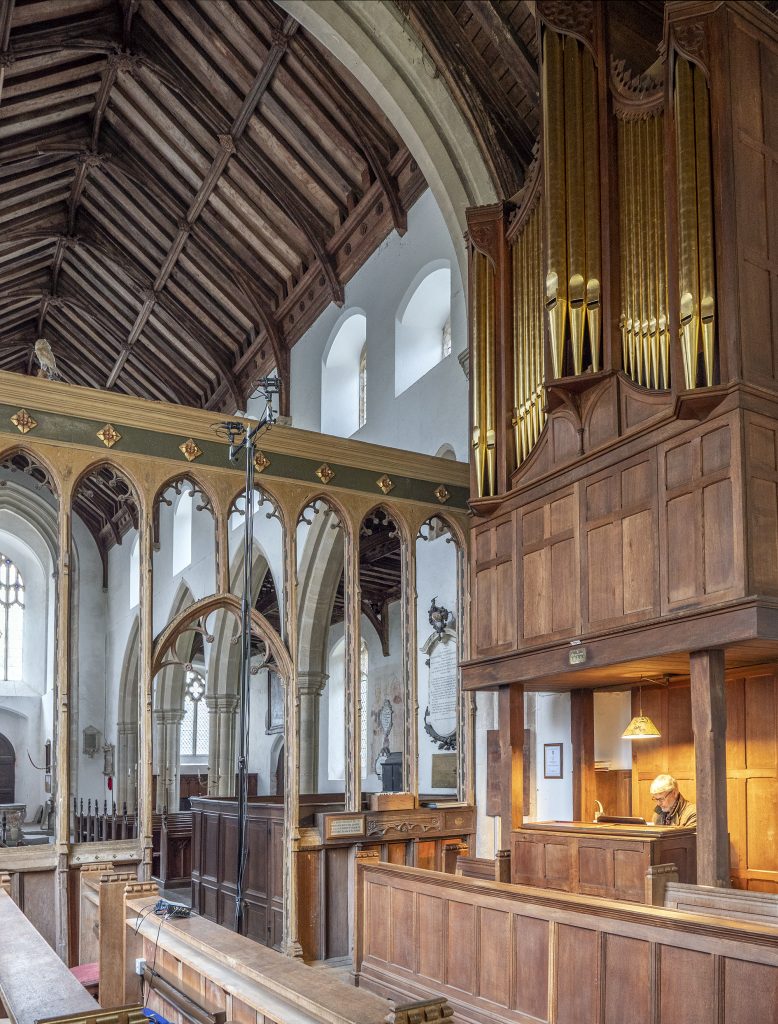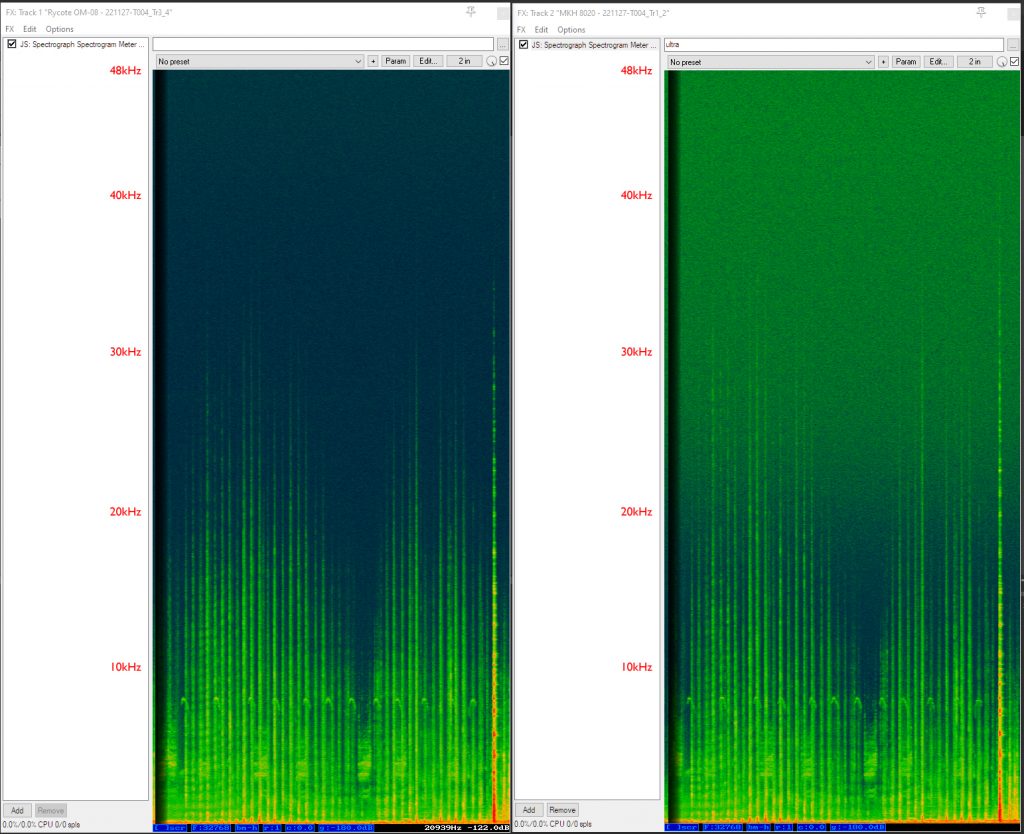
Introduction
In part 1 of the blog posts on recording test sessions with the City of Norwich Pipe Band (a prelude to a CD recording, with the tests focused on establishing whether recording indoors or outdoors is preferable), I covered the rationale and detail behind the microphone choices. To recap, with the band formed in both a circle and a near circle, I decided to go with a native B-format array of two fig 8s (Sennheiser MKH 8030) and an omni (Sennheiser MKH 8020), which, in terms of the required stereo end product, gave me options of mid-side with two fig 8s (i.e. decoding to a Blumlein pair), omni mid-side, and double mid-side (the latter with any polar pattern for the mid mics). And just to cover all bases, I also elected to add a spaced pair of omni mics (Rycote OM-08s). This second blog post is concerned with the recording and the results.
Location
Recording a pipe band indoors requires a large space. In the absence of a massive purpose-built recording studio (ruled out due to cost and because this was always intended as a location recording of a non-competition pipe band), I was glad to be able to arrange for use of Wymondham Abbey (many thanks especially are due to Brian Randall, churchwarden, for his help and support). The early 12th-century nave that survived the demolition of the rest of the abbey at the Dissolution (to function thereafter as the parish church for the town) is substantial, being twice the size of Abbey Road Studio One: if a small pipe band (the recording involved some members only – we had five pipes, one tenor drum, one side (or snare) drum and a bass drum) was to overwhelm the abbey church, then indoor recording would evidently be a non-starter outside a studio or concert hall.
Arranging the band
The regular formation used by pipe bands is a circle, and I could see no reason to, say, go for a more linear concert-style arrangement for recording. On the one side, recording a band in a circle is a challenge, but, as we have seen in the previous post on mic array selection, one that is solvable. But aside from the easy benefit of intervisibility for band members, this arrangement offers an additional benefit for loud acoustic instruments such as bagpipes and drums: direct sound will predominate over reflected sound from all directions. That is certainly the case if an unbroken circle is adopted, but balancing this with the array options (which included mid-side with two fig 8s) meant that these tests comprised both a full circle and a very broken circle – i.e. two opposing arcs each just under 90 degrees. With a modest contingent of the band for the test session, for the full-circle version we had the pipers occupying a little more than half the circle, which had a radius of around 2 metres. For the two opposing arcs, the pipers were all on one side facing the three drummers on the other side, with a radius of 3 metres for both arcs. We will replicate the arrangements for the outdoor test session in due course, but, evidently, any CD recording with a larger number of band members is likely to require some tweaking of the radius to accommodate everyone. That said, the band members were far from squashed together on this initial session.
Recording
Prior to the recording test session, I dropped into one the regular practices to meet the band. They hold these in the former Regal Cinema (now part of the Wymondham & District Ex-Services Social Club), so, while not a remote glen, it is far from a small room with a low ceiling. The sound of the band, however, came bouncing back from all directions and, given the reputation of bagpipes, I was a little concerned about levels before the test session. With only one pad on one of the mics (courtesy of the single MZF 8000ii filter I have – more on that soon) I was crossing fingers that I would be OK in terms of volume: with healthy max SPLs of 139dB for the MKH 8030s and 138dB for the MKH 8020, I was happy with the Sennheisers, but the Rycote OM-08 with its max of 127dB was an order lower. And then, what about levels into the recorder? Well at least with the Sound Devices 788T I had the option of using line inputs, which can still supply 48v phantom power, if things got overly hot. Needless to say, such slightly nagging concerns were entirely unfounded: with the more distant 3 metres of the two arcs I was able to set all the mic input trim/gains at 20dB, and with the shorter 2 metre radius of the full circle, I was fine with 15dB. Perhaps more reassuring too, the reflected sound in the aisled abbey church seemed much less overwhelming than the practice rooms: or was I just acclimatising!

The results
With the native B-format array, the options are endlessly variable, but what follows are some short clips (around 30 seconds long) from the beginning of Scotland The Brave (my request, as familiar to many: but we did record a couple of other tunes too), covering the main options.

Starting off, here are clips from the recordings of the band arranged in two opposing arcs:
First, we have fig 8 mid-side with the two MKH 8030 mics, which, of course, decodes to a Blumlein pair:
The stereo imaging is good for this, but the bass drum is very light. Looking at this in an FFT frequency spectrum analyser (Voxengo SPAN), the fundamental of the drum is around 35Hz, so the lack of low end in the MKH 8030 (whilst unusually good for a fig 8) is rather exposed. With a coincident omni in the array we can add this in a variety of ways, but just to keep things straightforward here is the same clip above with the bottom end of the omni MKH 8020 mixed in (with a 100Hz low-pass filter) at -6dB.
So now moving on to the omni mid-side pair itself, which, of course, has no problem with the bottom end of the bass drum. As you would expect, the drums have swapped sides (most obviously the snare is now on the left as it was in reality) as this and the subsequent clips don’t have the flipped LR stereo of the rear side of fig 8 MS and Blumlein pairs:
Leaving the various outputs of the native B-format array for the moment to compare omni-based recordings, here is the omni AB (spaced pair) of Rycote OM-08 mics at 840mm spacing (the spacing chosen to match the stereo recording angle of the Blumlein pair, decoded from the fig 8 mid-side pair, which lay behind the two opposing arcs formation):
Next up we have double mid-side. This uses forward and backward cardioid mid mics (created by mixing the omni and forward-facing fig 8 in the native B-format array) with the two resultant cardioid mid-side arrays mixed at the same level:
This might well be fine with the full band (and the low end is certainly present, due in no small part to the fact that the cardioids are created from a mix of the forward-facing fig 8 MKH 8030 and the MKH 8020 omni, so, as my preparatory tests demonstrated, have a better bass response than the MKH 8040 cardioid), but the level of the very small drum section is a bit low. Of course, we can change independently both the polar pattern of the two mid-side arrays that make up a double mid-side array and, more relevant here, can change the relative levels between the front and the rear. So here is more of the same, but with the rearward-facing component of the double mid-side array 6dB louder than the front:
And to demonstrate this flexibility a bit further, here is the double mid-side array again, but with the rearward-facing component of the double mid-side array 12dB louder than the front:

Moving on, here are clips from the recordings of the band arranged in a full circle. Again the clips comprise the opening part of Scotland The Brave.
As before, first off we have fig 8 mid-side with the two MKH 8030 mics:
This still lacks the bottom end of the bass drum as with the fig 8 mid-side recording of the two arcs, but I must admit that the effect of the full circle (i.e. not avoiding direct sound from the side, with the consequent phasing issues arising from the fact that such sound is picked up by the front of one capsule and the rear of the other) is much less noticeable than I thought it would be. Perhaps that’s just my ears (I have been listening to a lot of bagpipe recordings over the last few days)! Anyway, I think it might still be one to steer away from and, accordingly, I haven’t included a version of this clip with added low end from a low-pass filtered omni mic.
On then to the omni mid-side pair, which, as before, has no problem with the bottom end of the bass drum. Again note that the drums have swapped sides (most obviously the single snare is now on the left as it was in reality) as this and the subsequent clips don’t have the flipped LR stereo of the rear side of fig 8 MS and Blumlein pairs:
Here is the omni AB (spaced pair) of Rycote OM-08 mics at 460mm spacing (i.e. narrowed from the previous 840mm spacing to give the wider stereo recording angle required for the full circle: 180 degrees):
Next up we have double mid-side. This uses forward and backward cardioid mid mics (created by mixing the omni and forward-facing fig 8 in the native B-format array) with the two resultant cardioid mid-side arrays mixed at the same level:
As noted in the two opposing arcs set up, the drums in the double mid-side recording here are a bit on the quiet side, reflecting the lack of tenor and side/snare drums, although, perhaps counter intuitively, they are clearer than in the equivalent recording with the two arcs, despite the pipers spreading into the rear half of the full circle. As noted before, we can change, independently, both the polar pattern of the two mid-side arrays that make up a double mid-side array and, more relevant here, the relative levels between the front and the rear. So here is the same as before, but with the rearward-facing component of the double mid-side array 6dB louder than the front:
And to demonstrate this flexibility a bit further, here is the double mid-side array again, but with the rearward-facing component 12dB louder than the front:
High-frequency loss with vertical omni
As mentioned in part 1 of the blog post, omni mics are increasingly directional with high frequencies, which is the main reason to orient the mic vertically in the native B-format array if dealing with a sound source in a circle rather than, more typically, largely in front of the mics: that is, to ensure an even response in the horizontal plane round the full 360 degrees. But, of course, it also means that this approach reduces the high-frequency response (albeit equally) in the horizontal plane. As I said in the section on mic arrays, I didn’t expect that the high-frequency losses would be hugely significant with a pipe band: indeed, it could be useful given the nature of bagpipes and snare drums. I certainly don’t feel that results are weak in that regard, but, for the sake of completeness, here is a clip of the omni mid-side recording of the band in the full circle, with the omni mic given EQ to compensate as per Sennheiser’s polar plot for the MH 8020:

Processing
The native B-format array offers a lot of flexibility, which is only partly explored in the already rather numerous clips provided above. These have all been produced manually in Reaper, albeit using a mid-side plug in for the MS processing. Further tools can aid the process, be that Schoeps’s double mid-side plugin or, more usefully, plugins that can use the WXY tracks of the native B-format directly. So finally, here are the WXY clips (for both the opposing arc and the full circle set ups) for anyone who wants to play with them in an ambiosonic audio processor such as the Soundfield by Rode plugin, with which I have had fun dabbling.
The verdict?
Well this may be too early to call, given that this recording session was designed to be the first of two tests to compare indoors vs outdoors recording of the pipe band. The outdoor session will probably have to wait until September, due to holidays and a flurry of summertime engagements for the band, and then we will have to juggle the vagaries of the weather. But, even before this second test, I must confess I am much happier with recording the pipe band indoors than I was beforehand: I was very much in the ‘record a pipe band outside’ camp (indeed, perhaps the only voice in this case!). The set up in the abbey worked extremely well from my perspective: OK, the part-band was imbalanced in terms of pipes vs drums (and, indeed, imbalanced within the drum line with just one tenor and one side/snare), and there are some tweaks that I would like to make when we have a fuller drum line (e.g. bringing the tenor drums forward of the snare/side drums), but the acoustic was excellent and vastly different to the practice room.
And, beyond that, this first session has been extremely useful for assessing the different means of recording the band in a circle or in a broken circle of two arcs: I am happy with both formations although, of course, the different mic arrays performed differently in the two configurations of the band. The omni AB, or spaced pairs, worked reasonably, but lacked clarity on the snare drum so would require extremely careful placement of band members to get the (baked-in) balance right, if possible: in the context of a loud pipe band with members understandably not used to protracted setting up for recording and the lack of really good (and isolated) monitoring on location, I would be loathe to go down this route. This isn’t unexpected, as I included the spaced omnis as something of a control in this test. The native B-format array was a great success in giving so many options from a three mic set-up, and producing what I think is the better sound. Using the two fig 8 MKH 8030s alone, as a fig 8 mid-side pair, underplayed the low frequencies of the bass drum, understandably, but, as we have seen (or, rather, heard), this can be supplemented by a bit of bass from the omni MKH 8020 mic. Again using just two mics, the omni mid-side (MKH 8020 and MKH 8030) pair gave a good result in both the opposing arcs and full circle arrangements. The (virtual) double mid-side array from the three mics, however, is my preference: while sharing the ability to vary the levels of front and rear with a conventional double mid-side array (say made with two cardioids and a fig 8), the fact that in this case it was derived from the native B-format array gives it additional advantages. First, it keeps the low end intact (by virtue of the increased low-frequency response of the two virtual cardioids made by combining the MKH 8020 and forward-facing MKH 8030). And, second, it has complete flexibility in post in terms of the polar patterns of the mid mics. Playing around with all this is certainly easier in something such as the Soundfield by Rode or Harpex-X plugins, and they make steering the mic arrays (not that useful in this instance) easier too. In short, I’m really impressed by the MKH 8030 and MKH 8020 native B-format array for recording musicians in a circle: I suggest that it is worth giving something similar a go if you have a comparable challenge and suitable mics to hand.





